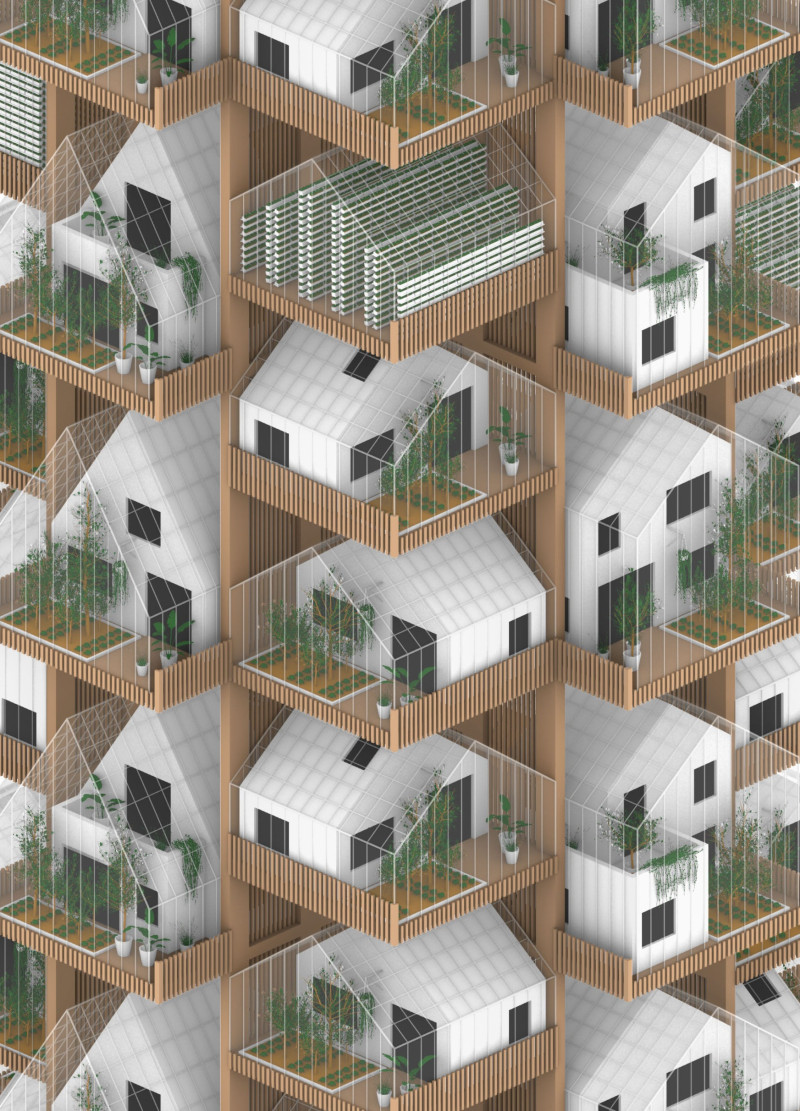5 key facts about this project
Sustainable Design Integration
A notable aspect of V-GEN is its focus on sustainable construction materials and methods. Utilizing cross-laminated timber (CLT) as the primary structural component allows for efficient prefabrication and reduced construction waste. The project also employs concrete and steel for structural support, ensuring durability alongside environmental considerations. The design includes green roofs and dedicated farming zones, enabling residents to engage in urban agriculture and enhance their connection to nature.
The incorporation of advanced water management systems, including built-in water collection and hydroponics, exemplifies the project’s commitment to resource efficiency. Solar panels are integrated into the design, providing renewable energy that further minimizes the ecological footprint of the development. Passive heating and ventilation systems contribute to energy efficiency, demonstrating a holistic approach to architectural design that prioritizes both comfort and sustainability.
Community-Centric Architecture
V-GEN stands out for its emphasis on fostering social interaction within the residential framework. The layout promotes community living through shared spaces where residents can gather and participate in collective activities. This design approach not only enhances social cohesion but also addresses the broader objective of creating an inclusive environment where diverse groups can thrive.
The project challenges conventional residential layouts, offering Living Boxes that provide functional flexibility for inhabitants. Each unit is designed to incorporate spaces for personal and communal activities, blurring the lines between private and shared living. This innovative configuration reflects a modern understanding of urban living, where adaptability and community are essential.
Unique Environmental and Economic Attributes
The V-GEN project aligns with principles of the circular economy by utilizing local materials and incorporating systems aimed at reducing waste. The design has the potential to significantly lower grocery expenses for residents due to the urban farming components. The project’s focus on food security, combined with affordable housing, showcases a pragmatic response to contemporary urban living conditions.
V-GEN's integration of smart home technologies for resource management enhances its functionality, ensuring that the structure remains efficient and user-friendly. The combination of technological integration with natural elements provides a comprehensive living experience that meets the needs of modern inhabitants.
To explore the architectural plans, sections, designs, and ideas behind the V-GEN Eco-Village project, the reader is encouraged to engage with the project's complete presentation, providing greater insight into its innovative approach to urban living.























